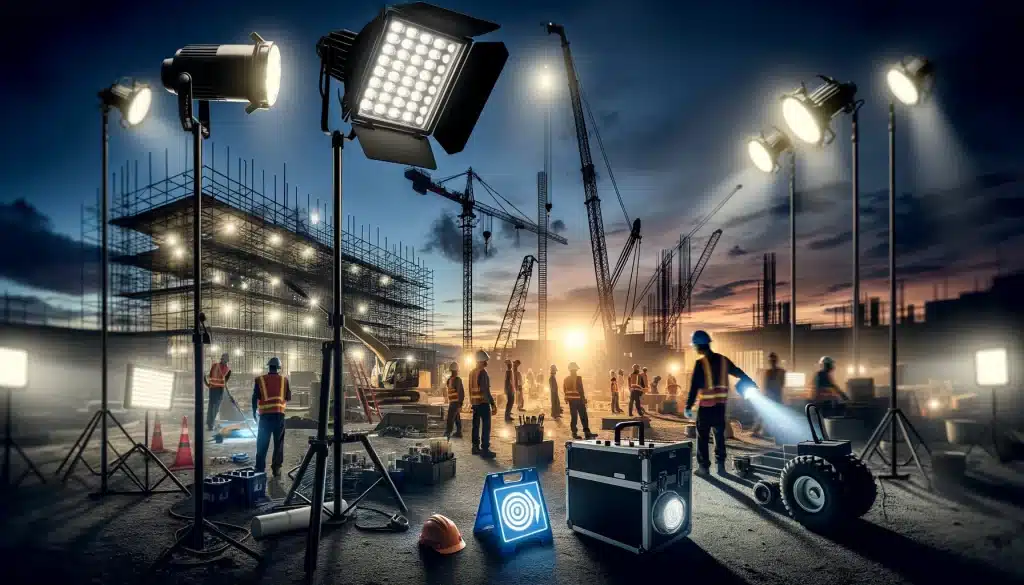
Welcome to Tally Ho Lighting
Welcome to Tally Ho Lighting
LED lighting has gained immense popularity in recent years. With its energy efficiency and long lifespan, it has become a go-to choice for both residential and commercial lighting solutions. However, along with its rise in popularity, several myths and misconceptions have also emerged. In this article, we aim to debunk these common myths and shed light on the truths you need to know about LED lighting.
One of the most prevalent myths surrounding LED lighting is that it is harmful to the eyes. However, this is far from the truth. LED lights emit a type of light called blue light, which has been linked to eye strain and fatigue. While it is true that excessive exposure to blue light can cause discomfort, modern LED lighting technology has significantly reduced this risk.
LED lights now come with built-in filters and diffusers that help minimize the amount of blue light emitted. Additionally, LED lights are available in various color temperatures, allowing users to choose warmer tones that are easier on the eyes. Therefore, when used correctly, LED lighting poses no significant harm to the eyes.
Another common myth is that LED lighting can trigger headaches and migraines. While some individuals may be more sensitive to certain lighting conditions, LED lighting itself is not a direct cause of these symptoms. In fact, LED lights offer better lighting quality and reduce flickering, which can actually help alleviate headaches and migraines for those prone to them.
It is important to note that headaches and migraines can be triggered by a multitude of factors, including stress, dehydration, and eye strain. Therefore, it is essential to address these underlying causes rather than solely blaming LED lighting.
Contrary to popular belief, LED lighting is not necessarily expensive. Although the initial cost of LED bulbs may be higher compared to traditional incandescent bulbs, the long-term cost savings outweigh this initial investment.
LED lights consume significantly less energy, resulting in lower electricity bills. Additionally, their extended lifespan eliminates the need for frequent replacements, further reducing maintenance costs. When considering the overall cost of ownership, LED lighting proves to be a cost-effective option in the long run.
A prevailing myth is that LED lighting emits harmful ultraviolet (UV) radiation, which can be damaging to the skin and eyes. However, this is not the case. LED lights are designed to emit minimal UV radiation, making them safe for everyday use.
In fact, LED lighting is commonly used in museums and art galleries to illuminate delicate artwork without causing any harm. It is crucial to note that UV radiation is present in various light sources, including natural sunlight. Therefore, LED lighting is no more harmful than other forms of lighting in terms of UV radiation emission.
Some people believe that LED lighting is not environmentally friendly due to the materials used in its production. However, this is a misconception. LED lights are highly energy-efficient, consuming up to 80% less energy compared to traditional lighting options.
Furthermore, LED lights do not contain hazardous substances such as mercury, which is commonly found in fluorescent lights. This makes LED lighting safer to dispose of and reduces the environmental impact.
LED lighting is often perceived as being limited in terms of design and versatility. However, this couldn’t be further from the truth. LED lights are available in a wide range of shapes, sizes, and colors, allowing for endless creative possibilities.
From flexible LED strips to customizable LED panels, there is a vast array of options to suit various lighting needs. Whether you are looking to create ambient lighting, task lighting, or accent lighting, LED technology offers the versatility to fulfill all your lighting requirements.
Another myth surrounding LED lighting is that it produces poor quality light. This misconception may stem from early LED lights that emitted a cooler, bluish light. However, advancements in LED technology have vastly improved the quality of light output.
LED lights now come in different color temperatures, ranging from warm white to cool white, allowing users to choose the desired ambiance and color rendition. Additionally, LED lights have excellent color rendering properties, ensuring that objects appear true to their natural colors.
In conclusion, LED lighting has become a popular lighting solution for its energy efficiency, long lifespan, and versatility. Dispelling common myths surrounding LED lighting is crucial to making informed decisions when it comes to lighting choices.
From debunking the belief that LED lighting is harmful to the eyes or causes headaches to highlighting its cost-effectiveness and environmental friendliness, it is evident that LED lighting offers numerous benefits without the drawbacks associated with these myths.
As technology continues to advance, LED lighting will only improve further, offering even greater efficiency, customization, and quality. Embracing LED lighting not only benefits individuals but also contributes to a greener and more sustainable future. So, let go of the misconceptions and embrace the truth about LED lighting.
Share to :

Lighting the way to a brighter tomorrow, one space at a time
Copyright © All Right Reserved